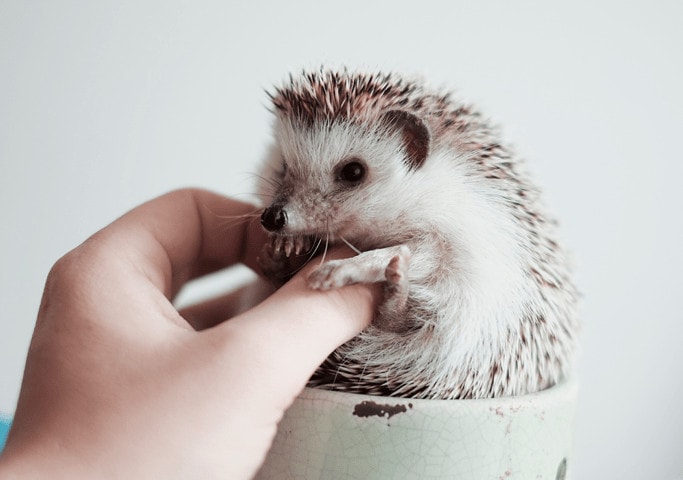│by Constance Lam, Gale Ambassador at the University of Durham University│
The twenty first century marks the return of the hedgehog: from the recent February 14th release of Sonic the Hedgehog, to the rise of hedgehog cafés throughout Japan and Hong Kong, it seems hedgehogs are resurfacing in popular culture.
A Prickly Affair: The Hedgehog in Literature
The hedgehog is revered in Muriel Barbery’s widely acclaimed novel, The Elegance of the Hedgehog. It is immortalised in the description of one of the protagonists, Madame Michel, who “has the elegance of the hedgehog: on the outside she is covered in quills, a real fortress” and also “the same simple refinement as the hedgehog: a deceptively indolent little creature, fiercely solitary–and terribly elegant.” If you’re interested in learning more about The Elegance of the Hedgehog, check out Michèle Roberts’ engaging review of the novel in the Financial Times Historical Archive.
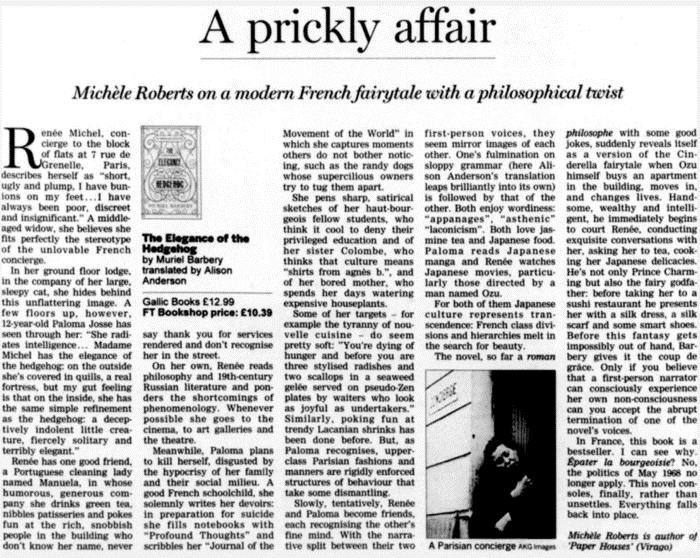
As I have always been fascinated by the hedgehog, which is one of my favourite animals, I decided to use the Gale Primary Sources archives to research where they stand in British culture, and how they are perceived by the public: are they seen as strong and elegant like Barbery’s hedgehog; or are they merely wildlife pests?
The Uses of a Pet Hedgehog
After entering the search term “hedgehog” for all the archives, I came across this article published in the Daily Mail Historical Archive titled “The Uses of a Pet Hedgehog”. The article humorously and fondly describes the benefits of having a pet hedgehog, even going as far as to assert that “some lonely soul” may find fulfilment in “that ingenious response to attention and those myriad endearing contacts which only a hedgehog can give”. The hedgehog is described as “a most attractive little animal, shyer than some, friendly, and appreciative of a little attention,” and the article suggests feeding it “a little bowl of sweet bread and milk every night.” The tone of the article becomes more satirical when listing the possible uses of a hedgehog include “a rotary boot scraper,” rolling it into a ball and “bowling it out” for the house cat, and cleaning up litter. However, my favourite part of this already humorous article is the suggestion to use a pet hedgehog to reserve seats – accompanied with a sketch. One can only imagine the pain of sitting on a hedgehog by mistake!
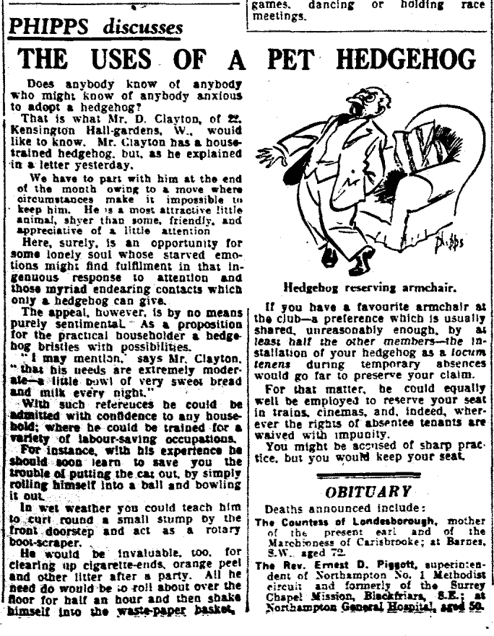
The Ways of the Hedgehog
Beyond a domesticated setting, I found a 1903 article published in the Edinburgh Evening News from the British Library Newspapers archive observing the diet and defence mechanisms of hedgehogs. Mr. Tom Speedy, a member of the “Edinburgh Field Naturalists and Microscopical Society” had researched hedgehogs: after dissecting them “he found nothing but beetles in their stomachs, and he did not believe that they would eat anything of a vegetable nature.” Speedy also observes that “the hedgehog showed great cunning in the concealment of her young,” describing how a hedgehog withdraws “into an attitude of defence by tucking in its body, head, and feet, and converting it into a ball of impervious prickles.” The hedgehog diet observed by Speedy corresponds to what they eat in the wild, mostly insects: the antithesis of “sweet bread and milk”!
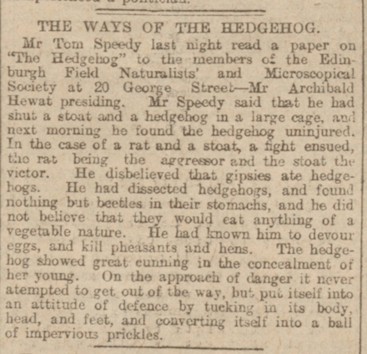
Hedgehog for Breakfast?
After noticing that there was a lot of interest in what hedgehogs eat, I decided to narrow down my research by adding an additional search term – “food” – within the same archive. Instead I was shocked to see this 1924 article, “Hedgehog for Breakfast,” which explains how a man and wife, “described as gipsies,” were summoned to a magistrates court after reports that their little girl was given “the hind leg of a hedgehog for breakfast”. Upon doing further research, I learnt that eating hedgehogs was a “traditional Gypsy dish” in the UK: there was even a 1997 hedgehog barbecue!
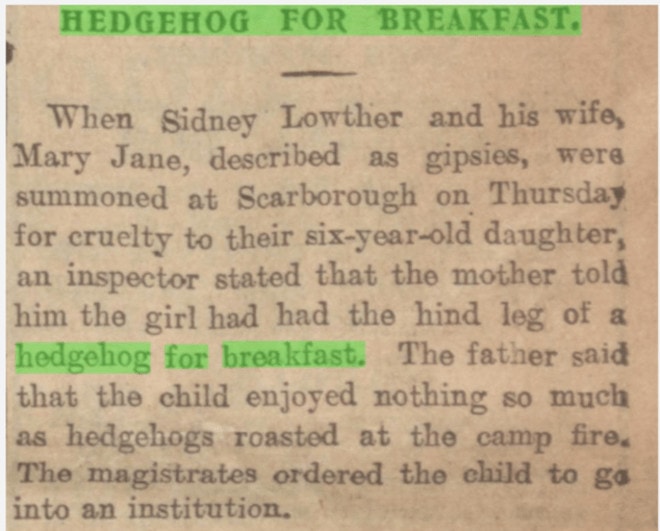
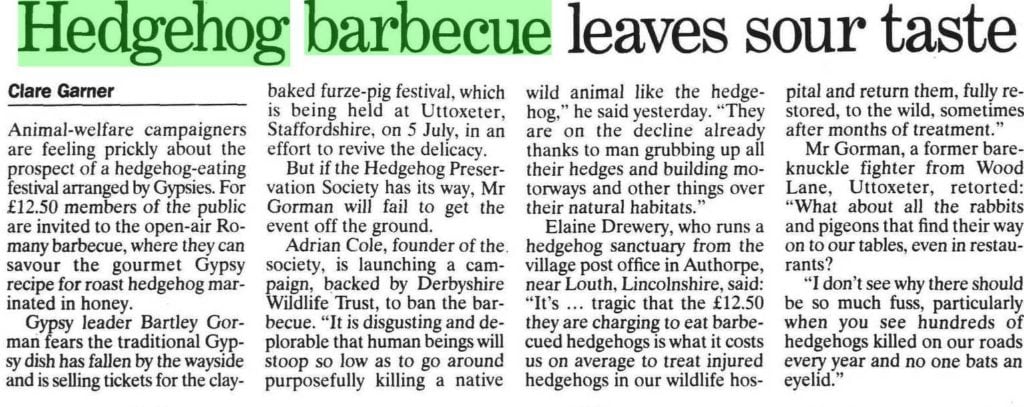
So it seems hedgehogs have had many historical uses, from food to football, but in popular culture today the hedgehog is revered as a clever creature, albeit a very spiky friend.
Interesting reading more about the representation of animals in popular culture? Check out The Little Ratters We Know Little About: The A Brief History of the Yorkshire Terrier or A Whistle-Stop Tour of Famous Dachshunds.
Blog post cover image citation: Photo by Siem van Woerkom @chippedwood on Unspash.com, https://unsplash.com/photos/k_E7DpVgftw

